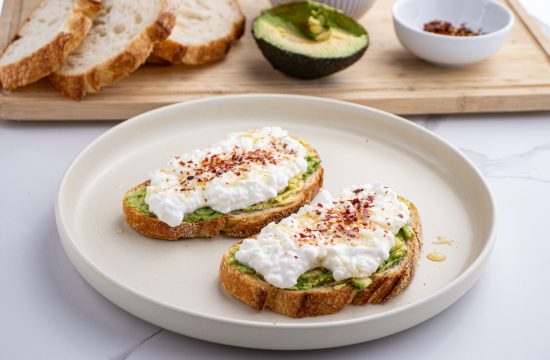Article by Dr Raghuram Y.S. MD (Ay) & Dr Manasa, B.A.M.S
Chronic Pain Syndrome – Pain which stays with you for a longer time period and does not go away becomes chronic. Such pain not just impacts your body but also the mind. This condition is called ‘Chronic Pain Syndrome’ (CPS). Thus, CPS has two components – physical distress and mental distress.
Related Reading – ‘Chronic Pain Syndrome’
In this article we shall try to understand ‘chronic pain syndrome’ through the lens of Ayurveda.
Ayurveda Understanding of ‘Chronic Pain Syndrome’
1. Understanding chronic pain from ‘definition of vyadhi’ perspective
Vyadhi
पुंस्याधिः मानसी व्यथा।(अमरकोश १/७/२८)
Vyadhi is a word used to denote ‘disease’ in general. The word Vyadhi is derived from the term aadhi which actually means ‘mental pain or grief’ but can be extended to address physical pain too. So, aadhi in general terms means ‘pain or grief’.
विविधं दुःखं आदधाति इति व्याधिः।(च.चि.१/५)
The word vyadhi is defined as ‘that which brings about various forms of duhkha or aadhi i.e. grief, discomfort or pain’.
विशेषेण आधीयते अभिनिवेश्यते प्रतीकाराय मनो अनेन इति व्याधिः।(शब्दस्तोममहानिधि)
The mind is constantly working to get rid of this pain or grief located in the body, mind or both and re-establish a state of health.
So, vyadhi is something ‘which is always at the back of the mind’ and a constant attempt to get rid of these troublesome features by the mind, is an ongoing battle. That is why we are in a state of unease and discomfort as long as we have pain or grief or any type of disturbance in a part or entire body.
The ongoing battle within our system, reflecting an ongoing pathological process that generates pain and grief over the long term, puts the body and mind in a state of unease for an extended duration. This is an explanation of ‘chronic pain syndrome’. The memories of diseases which are not totally cured and the footprints of some diseases which are stubborn and don’t go away easily remain deep buried in our body, mind and subconsciousness and hence get aged and chronic in due course of time. The body and mind, with time, would learn to tolerate and live with the pain.
‘Doctor, no one can help me, I guess that I would have this pain for a long period of time and I have to learn to live with it’. Such statements given by patients are not new for any doctor. They depict that the pain is long standing in these people and is now layered into the mind, senses and sub-conscious levels. The person feels helpless. It is because of many reasons, – the disease and the painful symptoms of a long-standing ailment have crossed the threshold of tolerance or the patient is weak minded and is ready to give up and surrender to pain. Here, management at both the physical and mental level is needed.
We can see that the majority of modern-day diseases are psychosomatic and none of them is strictly physical or mental in nature.
तद् दुःख संयोगा व्याधय उच्यन्ते।(सु.सू.१/२३)
दुःखं काय वाक् मानसी पीडा, विविधं दुःखं आदधाति इति व्याधिः।(डल्हन)
The association of the human being (karma or chikitsya purusha – the subject of treatment) with duhkha – pain or grief is called vyadhi. Dukha can be in the form of physical, mental or vocal pains. So, vyadhi is that which manifests at many levels and in different forms. Vyadhi is a word which has a larger dimension and shall not be limited to define physical disease or pain.
Vyadhi can define acute or chronic disease, acute or chronic pain. Chronic pain syndrome can be understood in terms of – long standing physical diseases, long standing mental diseases, long standing vocal diseases or long-standing psychosomatic disorders which are not responding to conventional treatments and are stubborn in nature or those with which the person has learnt to live.
तस्य पुरुषस्य दुःखाय संयोगो येषां आगन्तु प्रभृतीनां ते व्याधयः।(डल्हण, सु.सू.१/२३)
Vyadhi is that which causes painful association of the human being with various types of diseases including physical, mental, traumatic, infections and natural diseases.
Long standing association with one or more of these diseases will associate a person with ‘chronic pain’. The person will then suffer with symptoms similar to ‘chronic pain syndrome’.
तत्र प्रतिकूल वेदनीयं दुःखं।(य़ोगदर्शन)
Pratikula Vedana i.e. pain which occurs in the form of troublesome, uncomfortable and incompatible feeling at the physical or mental levels or both is called as duhkha or vyadhi.
विकारो दुःखम् एव च।(च.सू.९/४)
Dukha i.e. unpleasant pain itself is called Vikara or Vyadhi.
2. Understanding chronic pain from the ‘synonyms of vyadhi’
In Ayurveda, vyadhi means disease. But the term is not limited to the description of a disease. The synonyms and definitions of vyadhi give us its broad-spectrum meanings. Ruk, ruja, aabadha and aadhi, which means pain, are synonyms of vyadhi. Upatapa which is also a synonym of vyadhi means rise of heat or trouble / discomfort caused to the body and mind. Dukha which means grief or trouble is also a synonym of vyadhi. Any disease troubles the body and mind and also would produce grief and pain. Another word gada which actually means mace is also a synonym for a disease. Just like the person who is attacked by the mace either gets injured or dies, one who is attacked by a disease also loses his life. Atanka which is a synonym of vyadhi means that which pushes the afflicted person into a web of troubles and makes life difficult. All these synonyms point towards ‘pain running a long course’ at the level of body, mind or both i.e. chronic pain syndrome.
3. Understanding chronic pain from ‘the relationship between Sharirika and Manasika Rogas’ perspective
According to Ayurveda,
1. The physical diseases are first caused by the aggravated physical doshas i.e. vata, pitta and or kapha, either individually or in couples or all together. Later, the mental doshas and mind gets involved.
2. The mental diseases are first caused by the aggravated mental doshas i.e. rajas and tamas qualities. Later the physical doshas are disturbed and the body too gets involved.
Thus, body and mind are two sides of the same coin. When one gets afflicted, the other one too is not spared, unless the pain, grief or discomfort is addressed earlier in the pathogenesis.
Both these manifestations assume psychosomatic nature sooner or later, both are long and ongoing processes and both give rise to symptoms mimicking chronic pain syndrome.
4. Understanding ‘chronic pain’ from the description of bheda, upadrava, sadhya-asadhyata, yapya and udarka
Certain terms point towards the description of ‘long standing ailments’ and ‘chronic pain’ associated with them. They are –
Bheda Avastha – It is the sixth stage of disease pathogenesis as explained by Acharya Sushruta in the context of ‘Shat Kriya Kala’. This is the stage of complications. When a disease is not treated properly in the ‘stage of manifestation’ i.e. Vyakta Avastha or fifth stage of the disease, wherein a disease manifests in its full-blown form with clear cut signs and symptoms, the disease progresses to the sixth stage in which the complications of the disease appear. This stage has a difficult prognosis and the disease in this stage is difficult to cure or becomes incurable. For the complications to appear, the disease should have run a chronic course. So, the pain and discomfort associated with these chronic diseases will also have a chronic course. This stage of complications of a disease depicts ‘chronic pain syndrome’.
Upadrava – Upadrava means complications. Complications of a disease, as said above, occur in the sixth stage of pathogenesis i.e. bhedavastha. There are many complications enlisted in the description of chronic pain syndrome. Pain itself can be a long-standing complication.
Sadhya Asadhyata – The prognosis of diseases is classified as Sadhya – curable and Asadhya – incurable. Further, the curable diseases are classified as sukha sadhya – easily curable and krichra sadhya – curable with difficulty. The incurable diseases are classified as yapya – manageable but not totally curable and pratyakhyaya – incurable. Some of the features of krichra sadhya, yapya and pratyakhyaya explain and explore ‘chronic pain’.
Among the features of easily curable diseases are mentioned –
– Navatvam i.e. disease of recent onset
– Upadravam na cha – disease devoid of complications
The opposite of this i.e. chronicity and association of complications makes the disease incurable or manageable, a reference to describe chronic pain syndrome.
Similarly let us see through the features of other sections of prognosis.
Features of Krichra Sadhya Vyadhi – A disease having the below mentioned features can be considered as difficult to cure –
– Caused by moderate causative factors
– Having moderate number and strength of premonitory symptoms and symptoms
– Any one among the seasons, body type and body tissue involved in the causation of disease is similar to the disease causing dosha
– Diseases affecting old aged people, children and pregnant women
– Not associated with more complications
– Treatment involving surgical procedures or cautery
– The disease being neither too new nor too old
– Disease manifesting in a place of dwelling not favourable for healing or in a part of the body wherein the disease is difficult to cure
– Disease afflicting one channel or organ system or pathway of manifestation
– If the four limbs of treatment are not available to full number or strength
– Involving two channels of the body but the disease is not too old
– Disease caused by two doshas
Features of Yapya disease
– Get quickly exacerbated with little and mild causative factors
– Afflicts deep seated and many tissues of the body
– Afflicts vital structures, bones and joints
– Symptoms are there almost everyday
– Is chronic and long standing
– Caused by involvement of two doshas
Features of Asadhya / Prathyakhyeya / Anupakrama disease
– Caused by all three doshas
– Cannot handle with any treatment modalities
– Occurs in all body channels and afflicts multiple organs, organ systems
– Causes sudden excitement and restlessness
– Associated with unconsciousness and loss of functions of sense organs
– Well and strongly manifested in a weak patient
– Has signs of bad prognosis
The nature and characteristics of the above said three categories of diseases i.e. krichrasadhya, yapya and anupakrama forms the backdrop of chronic pain syndrome. People having diseases with features of any one among these three are ideal candidates to develop chronic pain in future. These people need a multi-dimensional approach in getting their diseases and associated chronic pain addressed and treated.
Udarka – Udarka means ‘post diseases’ or ‘remnant marks of a cured disease’ or ‘weakness and other symptoms which occur after a disease is cured’ i.e. sequel of a disease. This may remain for a long time and cause bothersome physical and mental pain in the patient and hence depicts the explanation of chronic pain syndrome. Sequela is a pathological condition resulting from a disease, injury, therapy or other kinds of trauma. It is also a kind of upadrava of a disease.
Management of Chronic Pain Syndrome through Ayurveda Interventions
As we know, chronic pain syndrome involves long standing and progressive pain and mental discomfort. It is not all about just physical pain.
Treatment principles include addressing both, ‘painful body’ and ‘distressed mind’. So, chronic pain syndrome should be treated in terms of treating ‘psychosomatic diseases.’
The generalized principles include –
Nidana Parivarjana – keeping away the etiological factors of the disease.
Shodhana – expelling the morbid doshas from the body. Shodhana also includes removal of blocks, excreta and toxins from the body and purifying it. The doshas and excreta which have remained in the body and have created blocks in the channels, viscera and cells will cause chronic pain and discomfort in the body and mind. This can be achieved by skilful administration of Panchakarma therapies.
Shamana – helps in pacification of the doshas and keeping them in a state of balance. This shall be an independent approach when the disturbance of doshas is in small or moderate quantities and so is the damage. This can be brought into the picture after Shodhana, in the follow up treatment. This will help in preventing the recurrence of diseases and its symptoms.
Pathya Apathya – Dietetics and lifestyle corrections are important components of handling chronic pain syndrome. They enhance the process of comprehensive healing and should gradually replace the medication. Pathya Apathya should be an adopted habit for life. This will help in preventing recurrences and relapse of disease or its symptoms.
Rasayana – The balanced and enriched best quality tissues are the best line of defences in the body. This is achieved by Rasayana therapy. Rasayanas act by enhancing the quality and quantity of the tissues and boosting and modulating the immune system. They are also anti-ageing medicines. Enhanced immunity will help the person to combat and get relieved of chronic pain or tolerate it to a better extent. They have a preventive and curative role and are the best medicines for addressing auto-immune disorders. Rasayanas work best when administered following Shodhana / Panchakarma therapies and in combo they work as best agents against chronic pain.
Achara Rasayana – is where one’s lifestyle practices, habits, self-discipline and conduct practiced in a determined pattern would act as Rasayana and bestow the same benefits to the individual.
Rasayanas and Achara Rasayana along with shodhana or alone are also best medicines for the mind and senses, relieve chronic pain and bestow immunity on the long run. These are the dsiciplines needed to beat the long standing pain.
Dinacharya etc – The doctrines and principles laid in the description of dinacharya – daily regimen, rutucharya – seasonal regimen, sadvritta – social wellbeing and dharaniya and adharaniya vegas – urges or reflexes of the body which need to be held and not to be held by force shall be strictly adhered to. These things should be addictive and when done, can make a massive difference.
Bahir Parimarjana – the external treatments are not limited to external healing. Skin is a transmitter of happy impulses to the deeper core of the body and would also soothe the mind and senses when pampered with soothing therapies. When a soothing herbal oil massage or sudation is given, we can see that the person is transported to a world of bliss, relaxation and comfort. Many would say that they haven’t experienced such relaxation in a long time and many would get emotional or broken. They are the best in combating chronic body and mind pains. These therapies include –
– Abhyanga – herbal oil massage
– Samvahana – application of oil over the body without massaging
– Swedana – various forms of sudation – sweating therapies – nadi sweda, bashpa sweda, pinda sweda etc.
– Udwarthana – powder massage done in wet or dry form, mainly useful in kapha and fat disorders
– Dhara – pouring in streams or showering medicated fluids like kashayam, taila, ghrta, ksheera, dhanyamla etc over the body and head
– Avagaha – immersion / tub bath in the same liquids mentioned in dhara
– Lepa – anointment of medicinal pastes on the painful areas of the body, like joints, muscles etc
– Upanaha – poultices of medicinal pastes applied on painful parts
– Murdni Taila – oil procedures / therapies done on the head – shiropichu, shirodhara, shirovasti, shirolepa
Vyadhi Pratyanika and Dosha Pratyanika Chikitsa – The patient needs to follow the prescription and advice sincerely. The disease causing doshas and the disease itself should be dealt away with to halt the progression of painful symptoms pertaining to body and mind. Disease specific and Dosha specific foods, lifestyle changes, behaviours and medicines / therapies shall be followed as per the advice of the physician.
Yoga and Dhyana – Yoga – ashtanga yoga including asanas programmed and customized as per one’s need, by Yoga experts will help in comprehensive healing of psychosomatic disorders. Similar impact is that of dhyana – meditation.
Sattvavajaya Chikitsa – forms a bulk of psychiatric treatment in Ayurveda. Sattvavajaya means conquering and channelizing the mind in the right and positive direction. This comprises the modern day ‘psychotherapy’ and counselling.
Dhee, Dhairya and Atmadi Vijnana – these are the three main principles of manasika chikitsa – treatment of mental disorders. Dhee – intellectual training, trimming and channelizing, Dhairya – instilling courage in the mind and Atmadi Vijnana – making one realize the ‘importance of self’, which is similar to psychotherapy and counselling.
Daiva Vyapashraya Chikitsa – many times the diseases and the physical and mental pain or discomfort caused by them are so stubborn and chronic that they cannot be addressed by conventional treatments and approaches. We might have seen many medical conditions fail to respond to the best of treatments. Such idiopathic diseases will need daiva vyapashraya chikitsa i.e. divine therapies.















